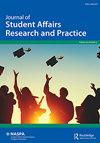The Application of Artificial Intelligence and Machine Learning to Anesthesiology
IF 0.8
Q3 EDUCATION & EDUCATIONAL RESEARCH
Journal of Student Affairs Research and Practice
Pub Date : 2023-05-31
DOI:10.47611/jsrhs.v12i2.4403
引用次数: 0
Abstract
This research paper explores the application of artificial intelligence (AI) and machine learning (ML) in anesthesiology. AI and ML have the potential to improve patient outcomes and enhance clinical decision-making by enabling anesthesiologists to monitor patient vital signs in real-time, predict the likelihood of complications, and optimize drug dosages to minimize side effects and enhance efficacy. The Hypotension Prediction Index algorithm is a compelling example of how AI and ML can be utilized to improve intraoperative patient care. However, there is a need for further research and validation to ensure the safety and efficacy of these technologies in clinical practice. Future advancements in AI and ML techniques are likely to result in more sophisticated and accurate predictive models, decision support tools, and monitoring systems that will ultimately benefit patients undergoing anesthesia. Overall, the application of AI and ML in anesthesiology presents a promising avenue for improving patient care and outcomes.人工智能和机器学习在麻醉学中的应用
本文探讨了人工智能(AI)和机器学习(ML)在麻醉学中的应用。人工智能和机器学习有可能改善患者的治疗结果,增强临床决策,使麻醉师能够实时监测患者的生命体征,预测并发症的可能性,并优化药物剂量以减少副作用并提高疗效。低血压预测指数算法是人工智能和机器学习如何用于改善术中患者护理的一个引人注目的例子。然而,还需要进一步的研究和验证,以确保这些技术在临床实践中的安全性和有效性。人工智能和机器学习技术的未来发展可能会产生更复杂、更准确的预测模型、决策支持工具和监测系统,最终使麻醉患者受益。总的来说,人工智能和机器学习在麻醉学中的应用为改善患者护理和结果提供了一条有前途的途径。
本文章由计算机程序翻译,如有差异,请以英文原文为准。
求助全文
约1分钟内获得全文
求助全文
来源期刊

Journal of Student Affairs Research and Practice
EDUCATION & EDUCATIONAL RESEARCH-
CiteScore
2.40
自引率
9.10%
发文量
50
期刊介绍:
The vision of the Journal of Student Affairs Research and Practice (JSARP) is to publish the most rigorous, relevant, and well-respected research and practice making a difference in student affairs practice. JSARP especially encourages manuscripts that are unconventional in nature and that engage in methodological and epistemological extensions that transcend the boundaries of traditional research inquiries.
 求助内容:
求助内容: 应助结果提醒方式:
应助结果提醒方式:


